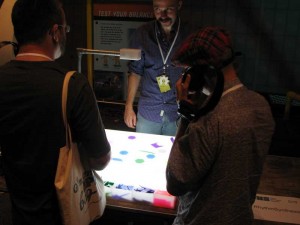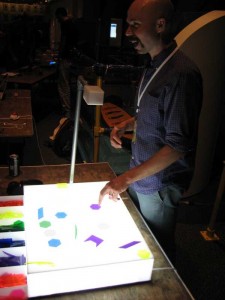The Open Hardware Summit closed with an evening reception, with hors d’oeuvres tables tucked in amidst dozens of demos strewn around a large room at NYSCI. From an Ethernet-connected Arduino to a visual musical instrument, here are a few that caught my eye.
First up was the Nanode from Wicked Device. This board is an Arduino clone with built-in Ethernet. It would make a great platform for any control tasks that needed to interact with other Internet-enabled devices.
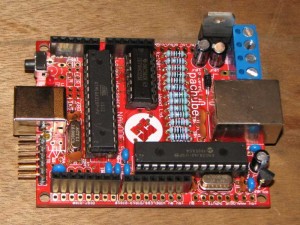
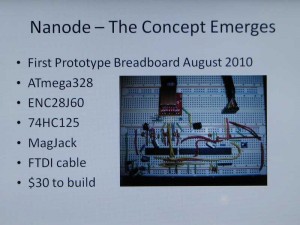
Right around the corner, an RC car was racing around the floor under the control of a subtly gesturing Jeremy Blum and his SudoGlove.
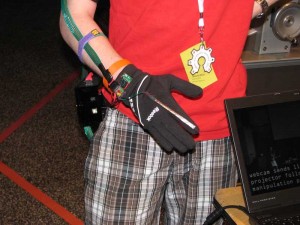
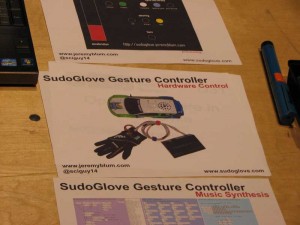
This curious device is titled “EaTheremin”. The forks had circuitry concealed inside the conductive handles. When one ate with them, current flowed from tines to handle via the diner’s body, causing a variable pitch to be emitted by a nearby speaker. I have to admit that I don’t quite get it, but I can appreciate the creativity of the EaTheremin’s inventor.
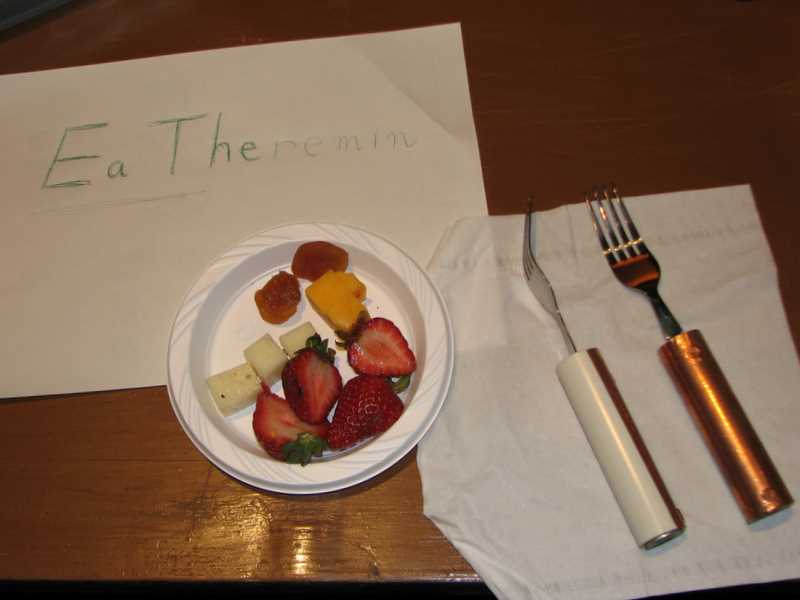
LittleBits had a table with their long-awaited magnetic circuit construction toy. The idea is to connect a series of small circuit boards to build interesting circuits. The boards hold themselves together with magnets, and keying in the plastic fittings at each end mean that incompatible components cannot connect to each other. LittleBits founder Ayah Bdeir is one of the OHS organizers.
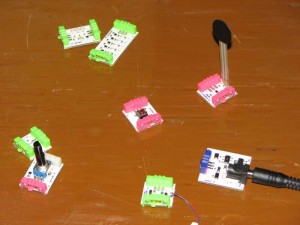
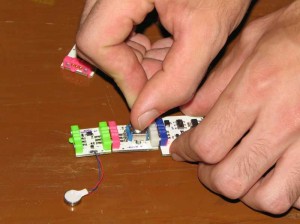
The Learning Pet is a cute robot that augments educational games for children, developed by Erin Kennedy, better known as robotgrrl. The Pet can pivot, flap its wings, and change its expression in synchrony with events in a computer game.
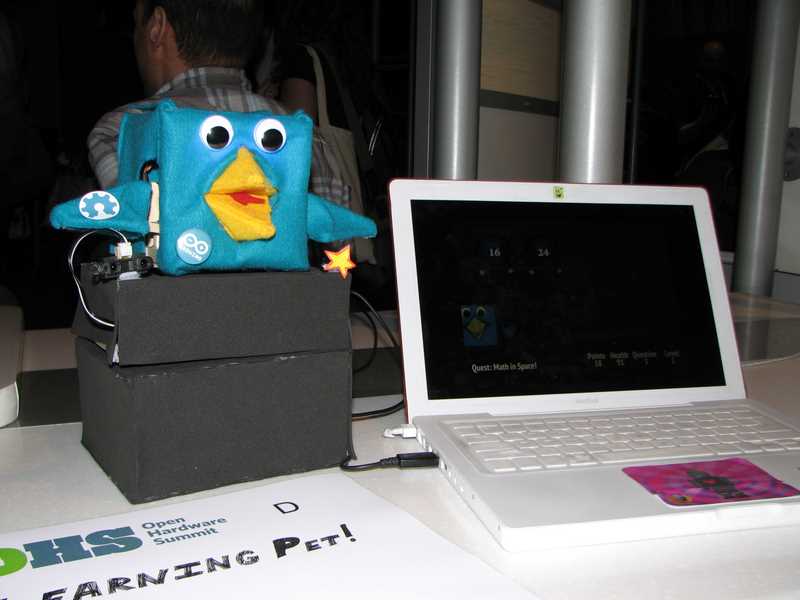
Finally, Ryan Raffa’s RhythmSynthesis musical instrument was always surrounded by a crowd. By placing colored geometric shapes on the lightbox, one can compose repeating rhythm tracks. The color of each shape sets the pitch, the area selects the octave, and the outline, position, and possibly the rotation of the shape change other aspects of the sound. The sounds from each shape are played as if by an old-fashioned radar beam sweeping out a circle under the light table. Ryan developed RhythmSynthesis for his MFA in Design Technology, so plenty of details are in his thesis paper.
Here is a video of RhythmSynthesis in action, from the RhythmSynthesis web site:
These are but a few of the many tables at the reception, all with abundant creativity.
